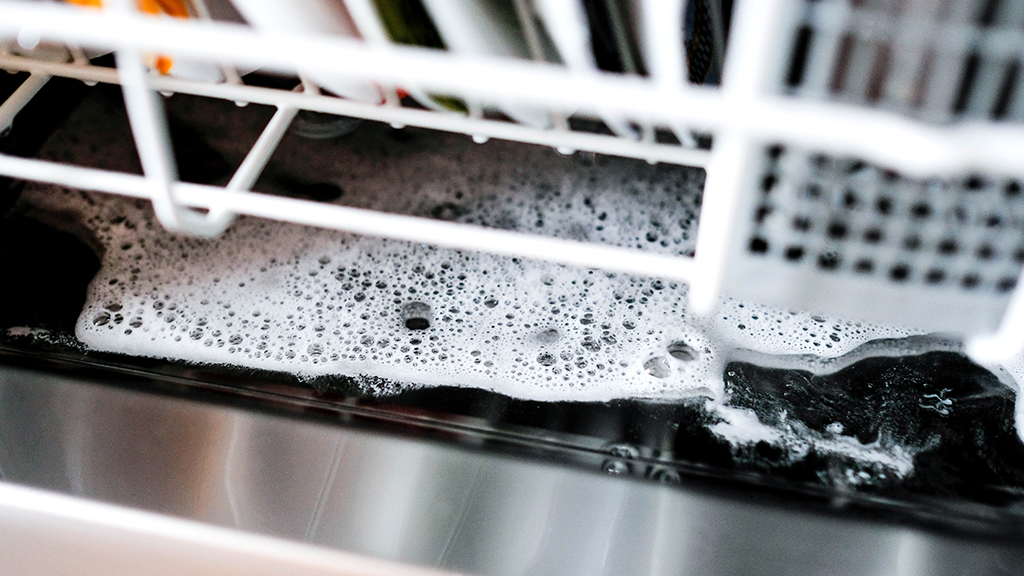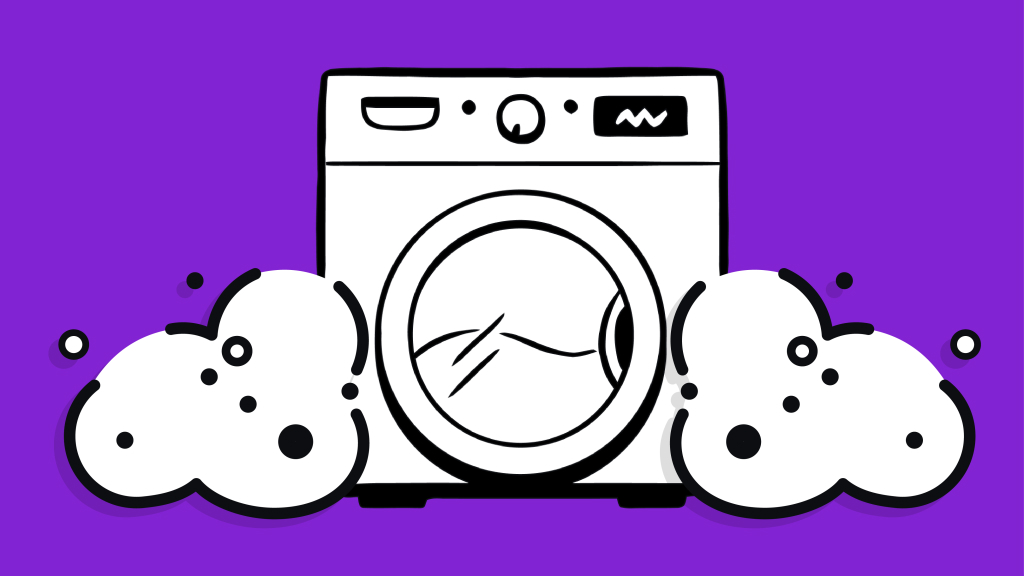You finish cleaning up after dinner and load your dishwasher. But when you open your appliance later that evening to put away your clean dishes, you find a pool of water and a load of dirty plates and silverware. Chances are your dishwasher is not draining properly.
At Asurion, when your appliances break, we fix them. Our experts are always here to help—from how to fix a noisy fridge to what to do if your washer won’t start. Here are their tips for unclogging a dishwasher that isn't draining properly and how to clean a dishwasher drain.
Steps to unclog your dishwasher drain
Remove your dishes
Start by taking all your dishes and flatware out of your appliance and setting them aside; you'll likely need to wash them again.
Check your garbage disposal
If you have a garbage disposal, turn it on; sometimes this can remove a backup of debris in the drain line, which will allow the water to drain from the dishwasher. After you've done that, run a rinse cycle and see if that solves the problem.
Disconnect your dishwasher from power
If you still notice there is a problem, unplug your dishwasher or turn off the circuit breaker that it's connected to. If you don't, you might electrocute yourself.
Remove any standing water
Before trying to find the source of the clog, remove any standing water in the dishwasher. Place cloth or paper towels around the base of the dishwasher to prevent water from leaking onto the floor. Next, remove any excess water from the interior of the dishwasher with a cup, and then soak up the remaining water with towels to make the drain accessible.

No one wants to deal with a broken appliance
With Asurion Appliance+, you don’t have to. Our plans cover all your eligible home appliances—no matter when or where you bought them—for $34.99 per month (+ tax).
Clean the drain
Since it is common for debris to get stuck in the dishwasher drain, try cleaning it with a solution of equal parts baking soda and vinegar. Pour the baking soda and vinegar into the bottom of the dishwasher and let it sit for 15 minutes. Then run a rinse cycle at the highest heat setting.
Check the filter
If cleaning the drain does not work, you should check the appliance's filter for any blockages and clean it. For instructions, take a look at our guide on how to clean a dishwasher filter.
Clean your sink's air gap
If you don't have a garbage disposal, check your sink air gap. It's a small, slotted cylinder below the sink near the dishwasher outlet hose.
To see if the air gap is the problem, remove it by turning it counterclockwise. Then clean out any debris with a stiff brush. After you've removed all the buildup, replace the air gap, secure it, and try running your dishwasher again.
Check and clean the drain hose
If your dishwasher still seems to be clogged, there may be an issue with your drain hose. If the hose is located behind the dishwasher, you'll have to pull your appliance away from the wall to access it.
Start by inspecting the hose for any kinks that may be preventing water from draining. If there are obvious signs that the hose is bent, try to straighten it.
If the hose doesn't show any obvious signs of damage, check for a clog. Place a towel or small container beneath the connection between the hose and clamp to catch water, and then use pliers to loosen the clamp so that you can remove the hose and visually examine it for any clogs.
After looking for signs of a clog, try flushing the hose with hot water and watch to see if the water is flowing properly.
If the hose seems to be clogged, use drain or hose cleaner and follow the product instructions provided to flush out debris. Once you've checked for and removed any clogs in the hose, you'll need to reattach it to the appliance. If the hose is overly clogged with debris, you may want to replace the hose.
If these steps don't resolve the problem, schedule a repair with an Asurion Expert to help fix the issue.
How to prevent dishwasher clogs
Dishwasher clogs can be a real hassle, but there are some easy ways to prevent them. Here are a few tips from our experts:
- Only rinse your dishes to remove large pieces of food that can potentially clog the dishwasher drain. Your dishwasher and dishwashing detergent are designed to work best if they have particles of food to clean from your dishes.
- Before you wash your dishes, examine the dishwasher and its components to see that everything is in working order. If you see obvious buildup in the filter or if the sprayer jet isn't properly positioned, you'll want to fix that before running a cycle.
- Using a hot water cycle will often help remove any residual buildup and prevent clogs in the future.
- Clean the interior and exterior of the dishwasher and the filter at least once a month so that you prevent any buildup that might result in a clog before it happens.
- Finally, a dishwasher benefits from being used often, so run cycles regularly rather than letting it sit idle for prolonged periods of time.
Reliable protection for the major appliances you rely on most
With Asurion Appliance+®, get hassle-free coverage for your favorite home appliances—no matter the brand or where you bought them—plus 24/7 troubleshooting support. Learn more about Asurion Appliance+™ coverage and how you can get total peace of mind protection.





